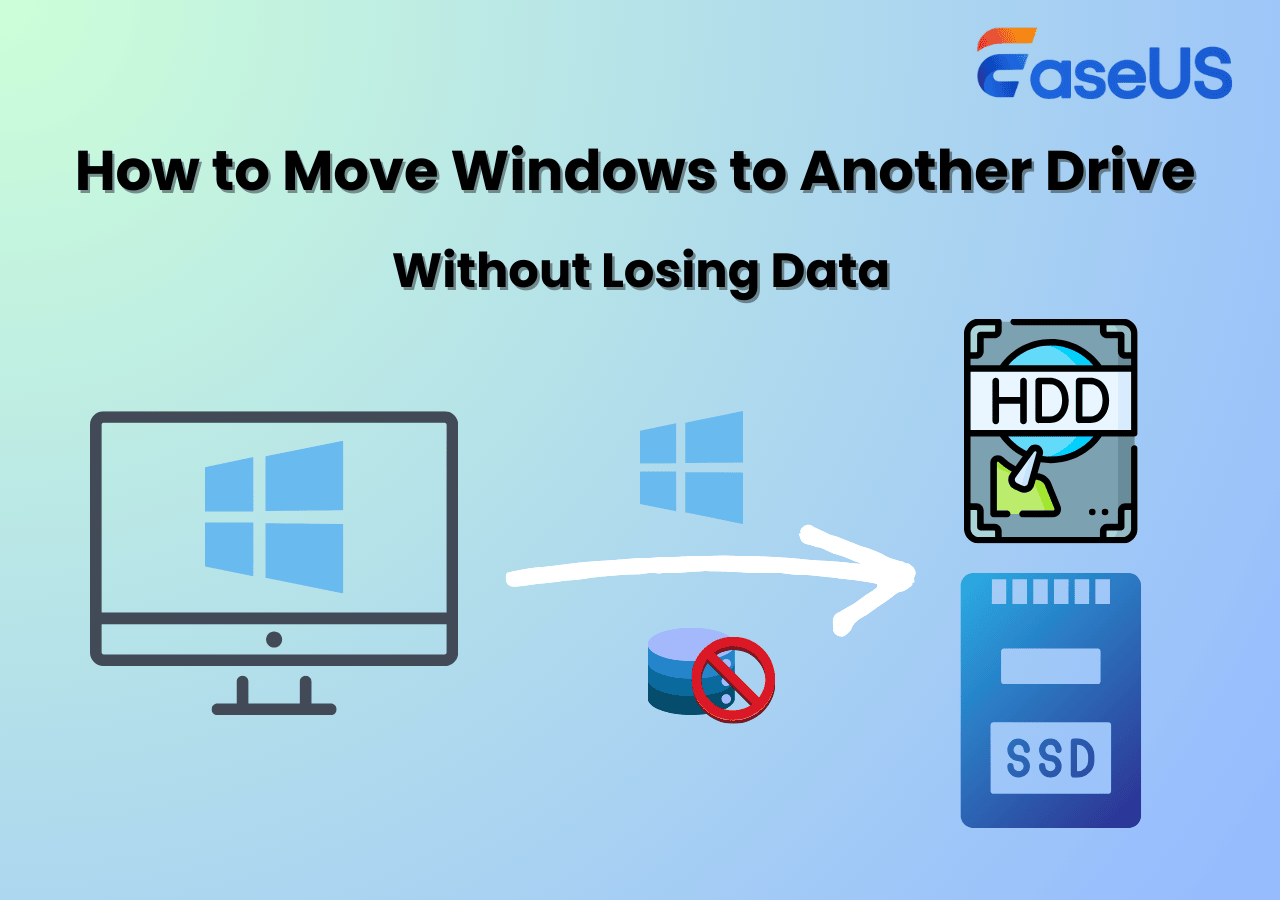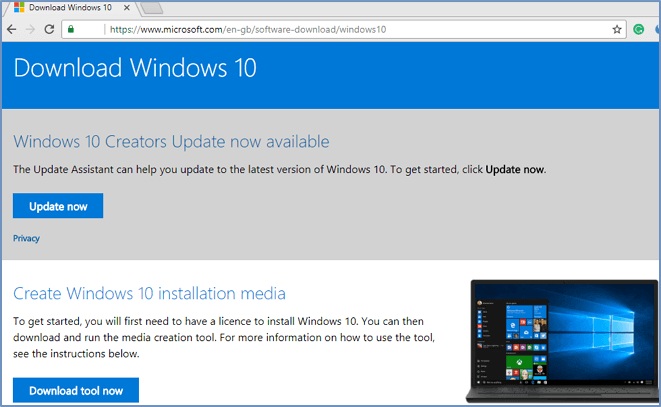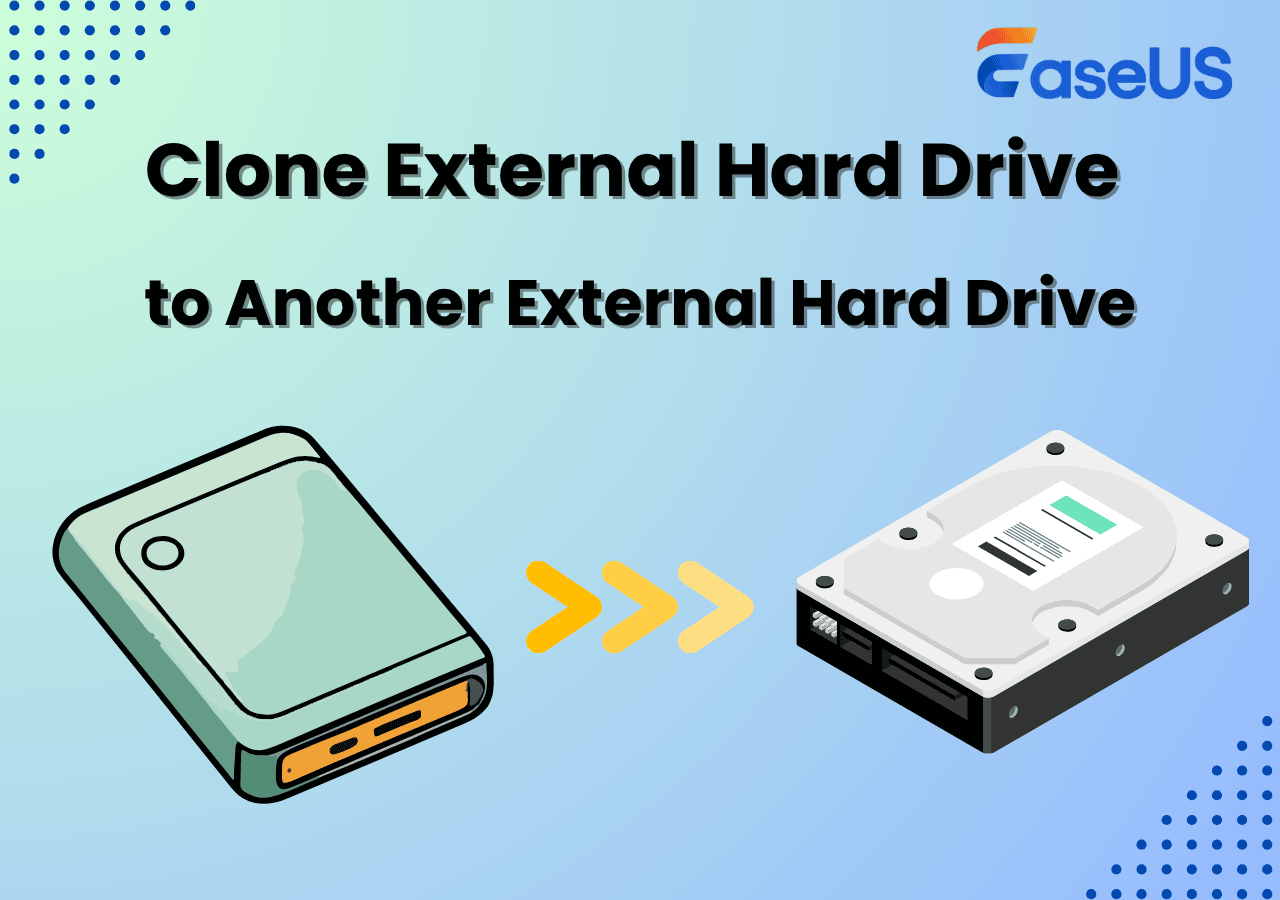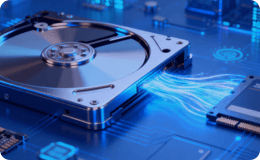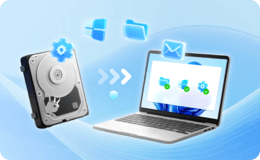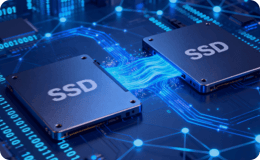Page Table of Contents
While the NVMe SSDs are three times faster than the SATA SSDs in reading and writing speeds, M.2 SSDs took it to a whole new level. If you are trying to improve your system performance by switching to the NVMe M.2 SSD, This blog will describe how to transfer Windows from SATA HDD to NVMe M.2 SSD.
Can I Transfer Windows OS from SATA SSD to NVMe M.2 SSD
👨I recently bought a Samsung 970 EVO Plus NVMe M.2 SSD (500GB) to replace my old Seagate BarraCuda 1TB SATA HDD. I want to transfer my Windows 10 OS from the SATA drive to the NVMe SSD without reinstalling everything. Is there a safe and efficient way to clone the OS while keeping all my files and settings intact? My motherboard supports NVMe boot. - post from Reddit
Yes, you can move Windows OS from a SATA SSD to an NVMe SSD to improve the overall performance of your computer. Not only can you enhance the data access speeds with NVMe SSD, but they also enhance your reliability and consume less power than HDDs.
An NVMe M.2 (Non-Volatile Memory Express) is the next-generation solid-state drive. It is an internally mounted storage expansion card of a small form factor with high reading and writing speeds. The native SSDs are three times faster than the HDDs, while the M.2 SSDs are almost 20-30 times faster.
In addition, SATA SSDs have a reading speed of up to 550 Mbps and a writing speed of up to 530 Mbps. But, the NVMe SSDs have a record speed of 6200 Mbps for reading and 2900 Mbps for writing.
Here's what you can achieve by using the NVMe M.2 SSDs:
- ✅Fast read and write speeds.
- ✅Low heat generation.
- ✅Improved performance.
- ✅Low power consumption.
- ✅Enhanced reliability for games and high-end PCs.
So, what are you waiting for? Keep reading, and transfer your Windows OS from SATA to NVMe SSD right now.
What to Prepare Before Transferring SATA HDD to NVMe M.2 SSD
You need to meet a few requirements to transfer Windows 10/11 from SATA HDD to NVMe M.2 without any issues. Here's what you need to do to prepare before moving forward:
- 1️⃣Get an NVMe SSD: Ensure that the NVMe SSD has enough storage capacity to store Windows data. Generally speaking, a Windows 10 OS requires at least 32GB, and Windows 11 OS needs a minimum of 64 GB.
- 2️⃣Back up target disk data: The most important thing is that, as we clone a hard drive to transfer data, the process will erase all data on the target disk. Keep a backup of at least the important files.
- 3️⃣Check the NVMe SSD compatibility: Check if your system supports the M.2 NVMe SSD's PCI-e protocol. The new-gen computers are compatible with the NVMe SSDs if you haven't updated your PC's BIOS to the latest version.
- 4️⃣SSD Enclosure/USB cable: You need an SSD enclosure or a USB-to-SATA cable to connect the NVMe SSD if your computer comes with only one slot. If your computer has an extra SSD bay, install the NVMe SSD into it properly.
- 5️⃣Disk Cloning Software: To clone from HDD to M.2 SSD, you need powerful disk cloning software to complete the process easily and fast.
Best HDD to SSD Cloning Software to Move Windows to NVMe
Now, the important part is to choose the best HDD to SSD cloning software to transfer Windows OS from SATA HDD to NVMe M.2 SSD. The software should be reliable and secure for moving the Windows data safely and easily. EaseUS Disk Copy is a disk cloning tool that can clone your OS to the new NVMe SSD in no time with several simple clicks.
You must select the SATA HDD (Source) and NVMe M.2 (Destination) to clone the entire OS onto it. Additionally, you can migrate the Windows OS without reinstalling, create bootable media using a USB flash drive, clone the disk sector by sector to avoid the bad sectors, clone a drive with bad sectors, etc.
EaseUS Disk Copy
Best OS Cloner to Move Windows from SSD to NVMe
- 1-to-1 copy of the target disk to transfer Windows seamlessly
- Transfer OS from one SSD to another
- Boot from the cloned disk scuuessfully
- Resize the partition when copying disks
- Clone Windows 10 to Smaller SSD Without Losing Data
- Compatible with various HDDs, M.2 SSD, NVMe SSD, etc.
All of these options make it an ideal tool for cloning and backup. Download the tool and try the free trial now.
Share the post with your friends and family to help them out!
How to Migrate OS from HDD to SSD Without Reinstalling
Now that you have everything prepared to migrate Windows OS to SSD. Let's see how to use the EaseUS Disk Copy to move Windows from SATA HDD to M.2 NVMe without reinstalling anything from scratch. Connect the NVMe SSD to your Windows computer and follow the steps below.
- ⚠️ Notice:
- Before transferring the files, remove the unwanted files from the source drive and install the M.2 SSD properly. Check if the drive is showing up in the file explorer.
- While system cloning, EaseUS will automatically detect the new NVMe SSD, and allow you to adjust the target disk layout as needed.
Before cloning:
- Install or connect the destination disk that you want to move OS to your computer, and make sure it can be appropriately recognized.
- Ensure the target HDD or SSD has enough capacity to accommodate your system files.
Step 1. Launch EaseUS Disk Copy and choose System Mode.
Install EaseUS Disk Copy system migration software on your computer, launch it, and choose System Mode. EaseUS Disk Copy will select the current system you use by default, including all system-related files and boot sectors.
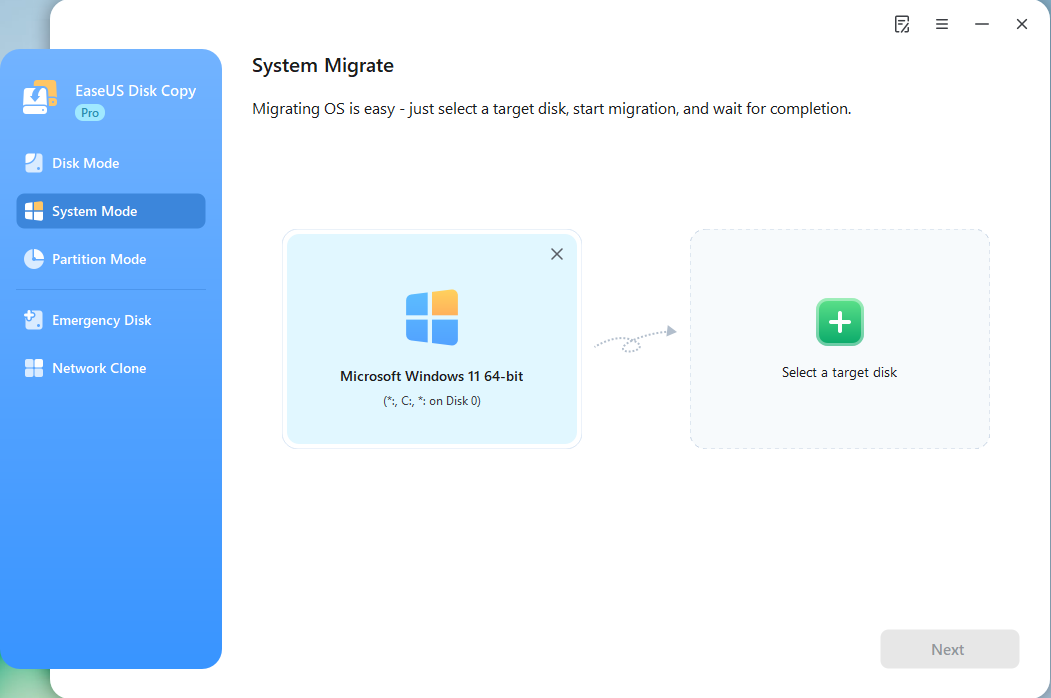
*If you apply dual-boot system, you can select another system by yourself.
Step 2. Select the target HDD/SSD.
Choose the destination HDD/SSD that you want to move OS to.
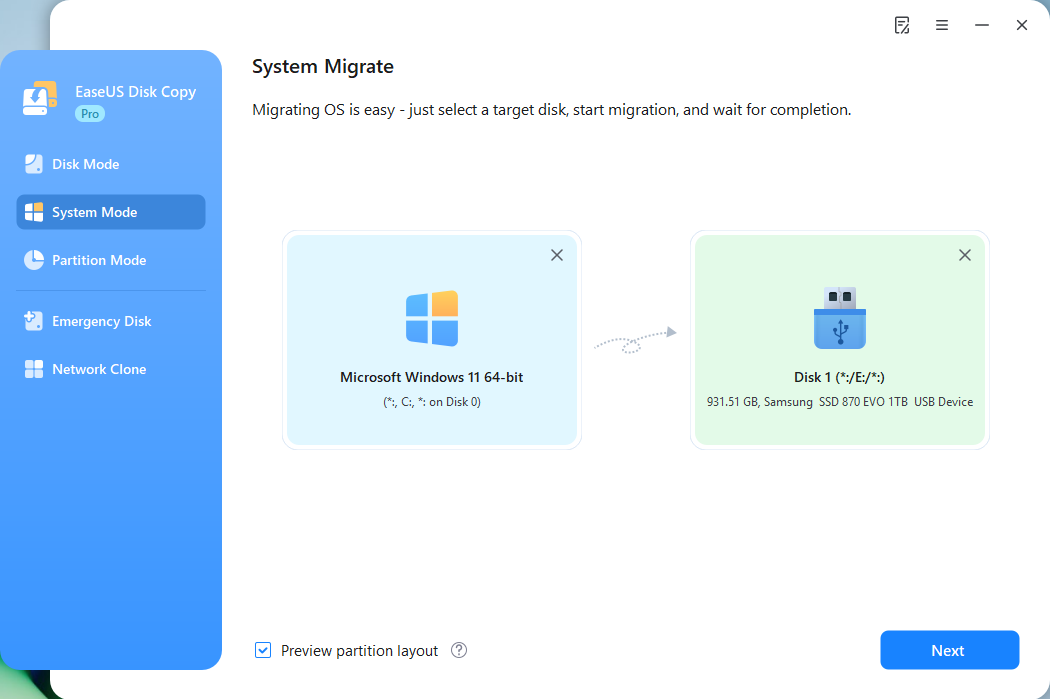
Step 3. Adjust target disk layout.
Specify the target layout as your preference. You can choose among:
- Autofit the disk: makes some changes by default on the destination disk layout so that it can work at its best.
- Copy as the source: create a 1-to-1 copy of your source disk, the layout is the same as the source disk.
- Edit disk layout: allows you to manually resize/move the partition layout on this destination disk.
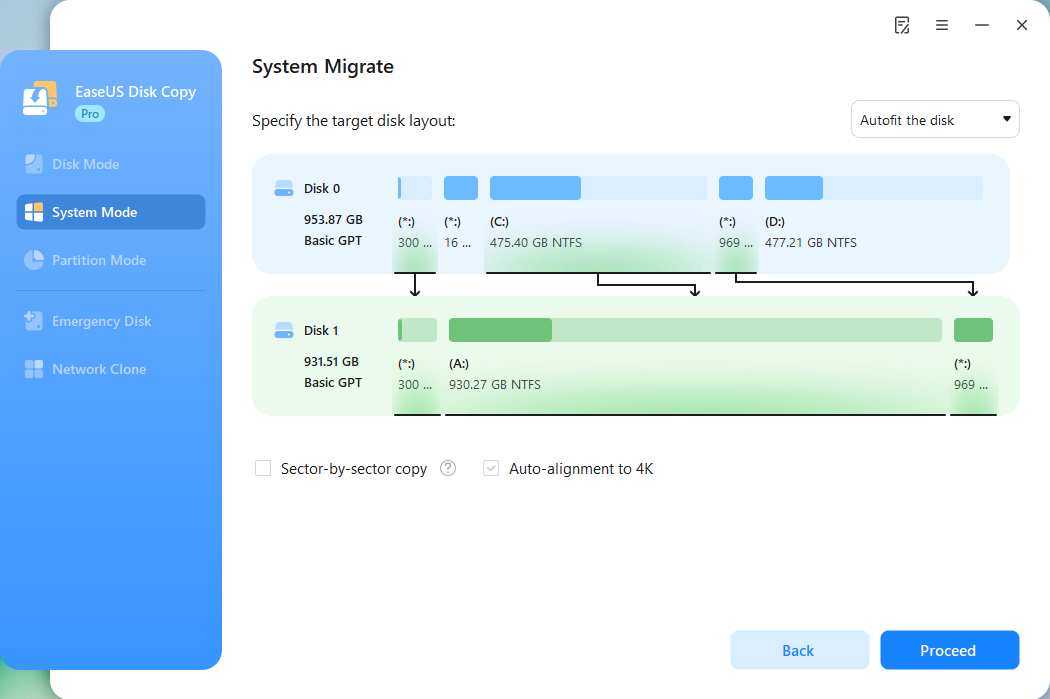
*The option Auto-alignment to 4K will be checked automatically to optimize the performance of your SSD.
Step 4. Start cloning OS.
Click Proceed, and a message will appear, warning you that data will be lost. Confirm the message by clicking Continue. Now, it will start cloning OS to the new disk.
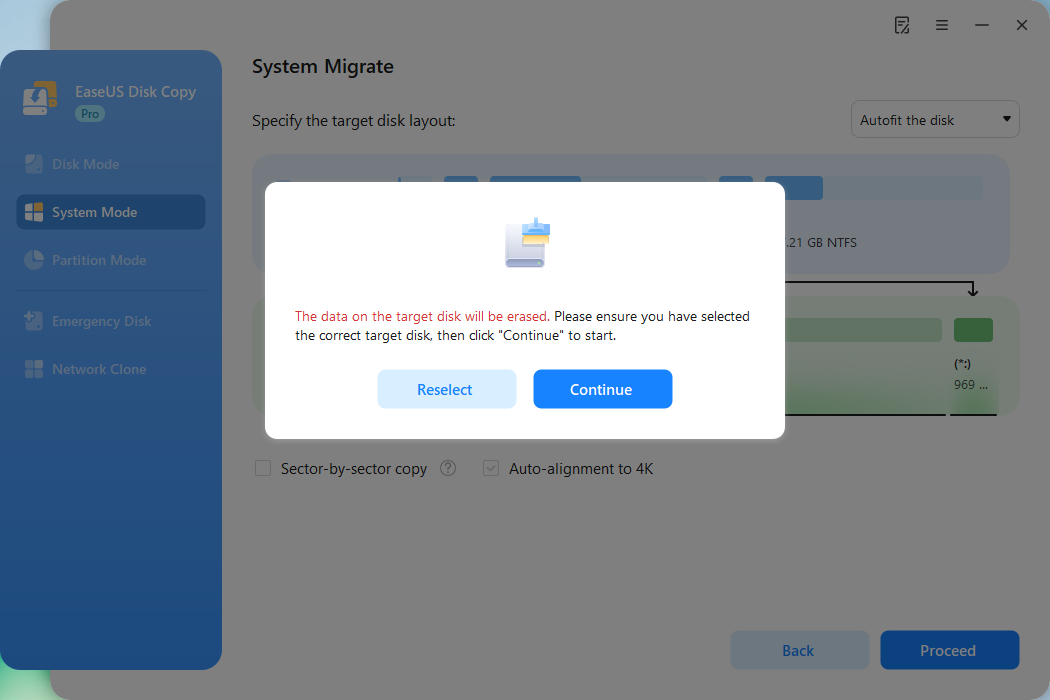
Now, it will start cloning OS to the new disk.
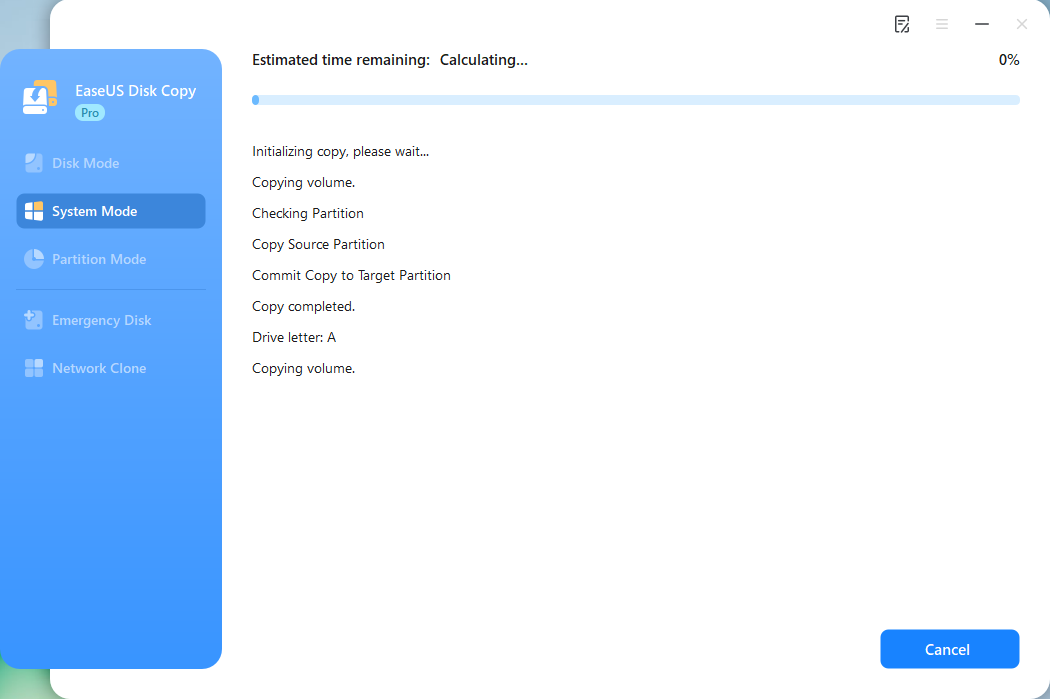
See also:
Pro Tip: How to Boot from SSD After Cloning
Now, how to boot your computer with the cloned SSD on Windows. For this, we need to change the boot order for the OS to read the boot files from our NVMe SSD. Check out how to enter BIOS and change the boot order.
Step 1. Turn off your PC and restart it. While restarting, long press the BIOS key (a BIOS key is specified by the manufacturer to invoke the BIOS setup on a Windows computer).
Remember: For most Windows PCs, the BIOS key could be "F2", "F10", "F12", "Del", etc. Search online if you are confused about it.
Step 2. Navigate to the "Boot" section in BIOS Setup and select the "NVMe M.2 SSD" as the first priority in Boot order.
Step 3. Click "F10" to save the changes and exit, it should be able to boot from the cloned SSD now.
If you have trouble booting Windows from the cloned SSD, check out this article. It might sort out your problem.

Cloned Hard Drive Won't Boot? Make Cloned Drive Bootable in 3 Fixes
Here useful tips about how to make cloned drive bootable are available. Try it to avoid or fix cloned hard drive won't boot issue in Windows 10/8/7 when cloning one hard drive to a new HDD or SSD. Read more >>
Share the post with your friends and family to help them out!

To Wrap Things Up
Transferring from the old-fashioned HDDs to NVMe SSDs is a good way to improve your PC's performance. If you have the M.2 SSDs, this post shows you how to transfer Windows from SATA HDD to NVMe M.2 SSD. To transfer Windows 10 to M.2 SSD from HDD, you need a reliable cloning tool.
EaseUS Disk Copy is a professional cloning tool and is a top-choice cloning and backup tool for many users. You can transfer files, upgrade the PC, and create local backups with ease.
FAQs on How to Transfer Windows from SATA HDD to NVMe M.2 SSD
Here are some of the most frequent FAQs asked on how to transfer Windows from SATA HDD to NVMe M.2 SSD. I hope you find these queries helpful.
1. Is it worth moving Windows from SATA SSD to NVMe?
Yes, NVMe is much faster in reading and writing when compared to SATA SSDs. While the reading speed of SATA SSD is 520 Mbps, the NVMe SSDs can read at 6200 Mbps. This helps you boost your system performance.
2. Is it easy to move Windows to M.2 from HDD?
Yes, if you are using a professional tool like EaseUS Disk Copy to move the operating system. Windows has a built-in utility called "Create a System Image" to transfer Windows to M.2 from HDD. However, the process is complex and requires technical expertise to perform without errors.
3. Should I install Windows on SATA SSD or M2?
The M.2 SSDs, which follow the NVMe protocol, boot faster and have low latency compared to the SATA SSDs. While the SATA SSDs are the conventional ones used with Windows, the M.2 are faster.
4. How do I transfer OS from SATA SSD to NVMe?
- Connect your NVMe M.2 SSD to your computer.
- Download the EaseUS Disk Copy and launch the tool.
- Select Clone and specify the Source Drive (C Drive) and Target Drive (NVMe M.2 SSD).
- Click Proceed to transfer OS from SATA SSD to NVMe.
- 🆕What's new in this version: updated on 2026.9
- Modified the TDK part to meet the users' search habbit
- Supplement product description
- Updated the newest product images
-
Updated by
>"I hope my articles can help solve your technical problems. If you are interested in other articles, you can check the articles at the bottom of this page, and you can also check my Facebook to get additional help."…Read full bio
EaseUS Disk Copy
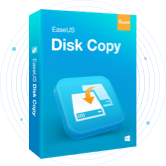
One-Click Disk Clone
Smooth PC Upgrade
EaseUS Disk Copy Resources

Start cloning disk with EaseUS Disk Copy

